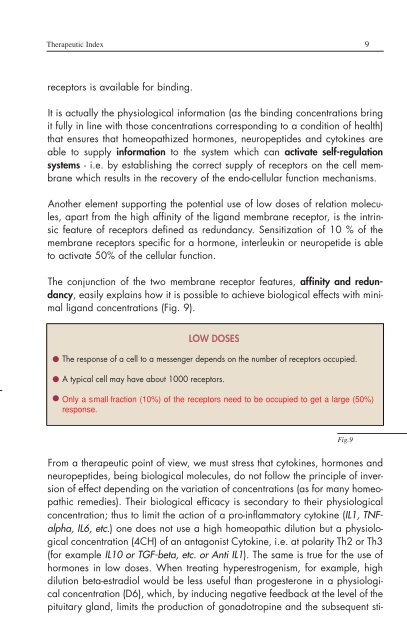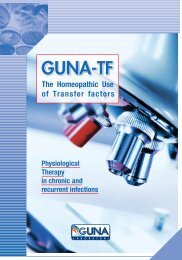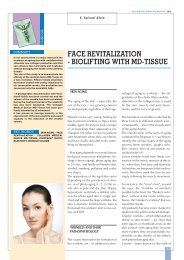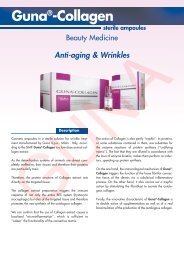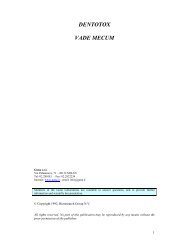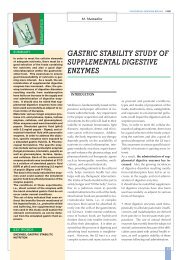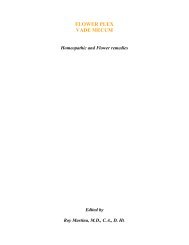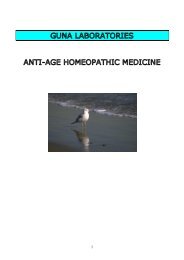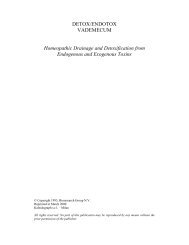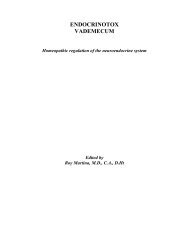Download the Guna Therapeutic Guide - Cyto-Solutions Ltd
Download the Guna Therapeutic Guide - Cyto-Solutions Ltd
Download the Guna Therapeutic Guide - Cyto-Solutions Ltd
You also want an ePaper? Increase the reach of your titles
YUMPU automatically turns print PDFs into web optimized ePapers that Google loves.
<strong>Therapeutic</strong> Index 9<br />
receptors is available for binding.<br />
It is actually <strong>the</strong> physiological information (as <strong>the</strong> binding concentrations bring<br />
it fully in line with those concentrations corresponding to a condition of health)<br />
that ensures that homeopathized hormones, neuropeptides and cytokines are<br />
able to supply information to <strong>the</strong> system which can activate self-regulation<br />
systems - i.e. by establishing <strong>the</strong> correct supply of receptors on <strong>the</strong> cell membrane<br />
which results in <strong>the</strong> recovery of <strong>the</strong> endo-cellular function mechanisms.<br />
Ano<strong>the</strong>r element supporting <strong>the</strong> potential use of low doses of relation molecules,<br />
apart from <strong>the</strong> high affinity of <strong>the</strong> ligand membrane receptor, is <strong>the</strong> intrinsic<br />
feature of receptors defined as redundancy. Sensitization of 10 % of <strong>the</strong><br />
membrane receptors specific for a hormone, interleukin or neuropetide is able<br />
to activate 50% of <strong>the</strong> cellular function.<br />
The conjunction of <strong>the</strong> two membrane receptor features, affinity and redundancy,<br />
easily explains how it is possible to achieve biological effects with minimal<br />
ligand concentrations (Fig. 9).<br />
LOW DOSES<br />
The response of a cell to a messenger depends on <strong>the</strong> number of receptors occupied.<br />
A typical cell may have about 1000 receptors.<br />
Only a small fraction (10%) of <strong>the</strong> receptors need to be occupied to get a large (50%)<br />
response.<br />
Fig.9<br />
From a <strong>the</strong>rapeutic point of view, we must stress that cytokines, hormones and<br />
neuropeptides, being biological molecules, do not follow <strong>the</strong> principle of inversion<br />
of effect depending on <strong>the</strong> variation of concentrations (as for many homeopathic<br />
remedies). Their biological efficacy is secondary to <strong>the</strong>ir physiological<br />
concentration; thus to limit <strong>the</strong> action of a pro-inflammatory cytokine (IL1, TNFalpha,<br />
IL6, etc.) one does not use a high homeopathic dilution but a physiological<br />
concentration (4CH) of an antagonist <strong>Cyto</strong>kine, i.e. at polarity Th2 or Th3<br />
(for example IL10 or TGF-beta, etc. or Anti IL1). The same is true for <strong>the</strong> use of<br />
hormones in low doses. When treating hyperestrogenism, for example, high<br />
dilution beta-estradiol would be less useful than progesterone in a physiological<br />
concentration (D6), which, by inducing negative feedback at <strong>the</strong> level of <strong>the</strong><br />
pituitary gland, limits <strong>the</strong> production of gonadotropine and <strong>the</strong> subsequent sti-


